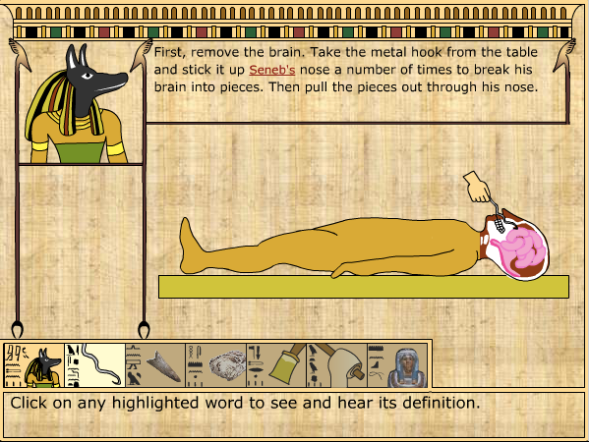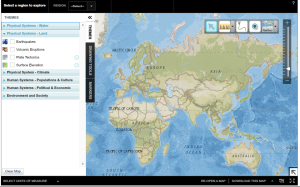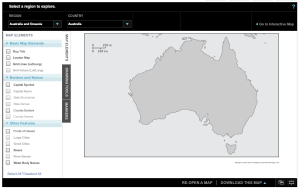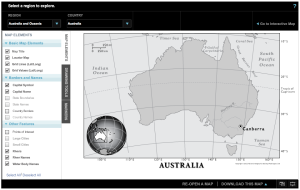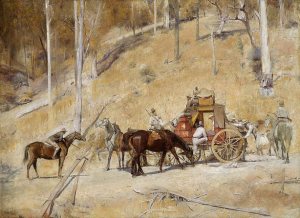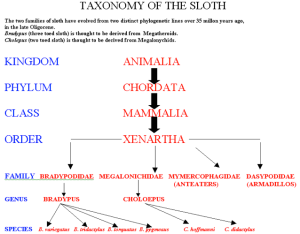I want to preface this with a note of how opposed I have been to using technology in the classroom. During my first practice, I set a goal with my mentor to use more technology with my students, and it has carried on through to my second placement. When it came to finding suitable online activities to use in the classroom, I struggled to differentiate between those that were of high quality, and those that were of low quality. Since I have been playing around more with interactive websites, and began to incorporate them into my classes, I noticed the value the brought to learning as the enriched the activities I set. I still, however, strongly believe that I should not have to use technology if it doesn’t add something more to learning. I struggled with this when I was challenged for not allowing students to complete an activity on a computer, as I felt that that particular activity was more efficiently done without using one. Now that I have done more research and have first hand used and found some great programs and applications, I can see myself incorporating them into lesson plans and learning activities.
Technology use has increased so quickly over the past two decades, and we are now in a ‘digitalized age’ where computers, tablets and mobile phones pervade nearly every aspect of our lives. Technology is not being ingrained in our lifestyles from such an early age that most of our daily functions are carried out with technological aid. Furthermore, overt and everyday use has altered the ways in which we think and carry out tasks. The vision for the future is that technology will be used to even further lengths. The challenge that this presents for the education sector is how can teachers integrate technology, such as computers, tablets, the Internet, applications, games, archives, interactive websites, into learning, in a way that reflects real life technology use and functions and “capitalizes on students’ cultural literacy’s” (MacBride & Luehmann, 2008, 182). It is not enough to simply digitalize already existing learning materials. Technology creates opportunities for peer and social learning, and emphasizes the collaborative nature of life, especially as students begin to use the Internet, which is a perfect example of social collaboration. Technology also helps students interact with learning more deeply, as technology supported learning can incorporate theoretical and practical elements of learning. While some teachers may argue that these skills are also developed without technology, technology has the potential to develop them even further, providing that teachers are open-minded, willing to try and trained to use technology appropriately.
Most technologies and programs are aimed at developing a set of skills termed “STEM” skills (Weigel, Straughn & Gardner, 2010, 10), which incorporates mainly science, technology, engineering and mathematics skills sets. As a teacher of humanities and language, I cannot comment on how such programs or technologies enrich learning through interaction. Many students consider humanities subjects, like history and geography, quite ‘dry’ subjects, as they are associated with reading books and memorizing facts. The change in history pedagogy has opened up many opportunities to incorporate technology, as there is no longer an emphasis on learning names of kings or dates of events. Contemporary history pedagogy, especially in the Australian curriculum, is focused on historical literacy derived from Peter Seixas’ principles of historical thinking, which encompass:
- Establish historical significance
- Use primary source evidence
- Identify continuity and change
- Analyze cause and consequence
- Take historical perspectives, and
- Understand the ethical dimension of historical interpretations.
(Seixas, http://historicalthinking.ca/concepts)
When teachers are planning to cover these criteria, it is easy to transform teaching out of the textbook to interacting with the past, which reflects “expert knowledge”, and how experts learn and understand their subject area (Bransford, Brown & Cocking, 2003, 30). One interactive website I used to help teach the significance of religion in Ancient Egypt is “Chicago Mummy” (http://oi.uchicago.edu/OI/MUS/ED/mummy.html), a site that allows students to virtually mummify an Egyptian noble. While students could have just read the mummification process from their textbook, they instead carried out the mummification themselves, which helped reinforce the steps needed to send an Egyptian into the afterlife.
In order to examine primary sources, students now have access to many artifacts though museum archives. Many museums have an online archive of the art and artifacts they own, and students are able to surf the web to examine them close up (Melbourne Muesum http://museumvictoria.com.au/collections/, The British Museum http://www.britishmuseum.org/explore.aspx?ref=header).
Although this doesn’t give students the opportunity to marvel at historical artifacts in real life, it provides students with more access than their textbook would, and they are able to interact with the artifacts though zooming in on images, and rotating them to have a better view, as well as following up any questions they might have about the artifact on the Internet.
Peer collaboration and peer learning can be heightened through the use of technology. It can cause problems of leadership and domination by students arguing over who gets to use the tool, but it is also the perfect time for teachers to help students develop their group and team working skills, as well as mastery over technology that they will be sure to use outside of school (Bransford, Brown, & Cocking, 2003, 217). Students are being instructed to learn in a very individualistic way, where they are expected to do a lot of work, by themselves, which unfortunately does not reflect the way of life outside of the classroom. There are many ways in which collaboration and peer learning can be fostered through the use of technology, and it can be done on a small scale, or a larger scale. On a small scale, classes can be broken into small groups and together use the Internet to do a mapping activity. The National Geographical Website (has an interactive map, where students can measure distances between places, look at a maps differently (from satellite, topographically, with or without boarders, country names, rivers) and learn about the different features of mapping, like longitude and latitude. Students are able to look at different parts of the world, or switch between information quickly, and they can keep or delete any markings they made on their interactive map.
An appropriately designed activity with interactive mapping in groups would engage students, as well as encourage them to work in teams, however the activity needs to be structured appropriately to get the most out of technology supported learning (Cox et al, 2003, 25), and some new behavioral habits may need to be developed in order to maximize collaboration (Cox et al, 2003, 24). In groups, students are assigned a country or region, with the task of doing a geographical analysis, using the mapping tools on the website. At the end of the activity, the students present their geographical findings to the class, which results in all students learning about all the regions that were examined. This works on a small scale level, as students work together and teach each other how to navigate the website and how to use mapping tools, as well as on a large scale, as the students take the role of the teacher to teach the rest of their class about a region. It demands geographical comprehension, problem solving, teamwork, organization of ideas and communication skills.
Since using blogging as a learning tool this semester, I see the worth of it in the classroom. It does mean, however that new behaviors need to be established, and ground rules are set to ensure the risk of cyber bullying or inappropriate usage. By using a blog to summarize, answer questions, or reflect upon what they learned in the class helps students reinforce what they have been working on. It is often drilled in to students that reinforcement of ideas after class is crucial, so a blogging task provides a more interesting way to reflect, and allows creativity and freedom to answer questions and express ideas (like I am doing with this piece of work, instead of using standard essay format). Blogging is also very popular amongst teenagers, with 51.5% of blogs in 2003 created by adolescents in the 13-19 years age bracket (MacBride & Luehmann, 2008, 173). It helps teachers keep track of work, and they can easily access and provided feedback to students, through the ‘comments’ section. Students can also provide feedback or ask questions of their classmates. Students may need to be encouraged to read, share, use and build upon others ideas, as this is not normally what occurs in classrooms. By making it a “routine” (MacBride & Luehmann, 2008, 181), blogging in the class will be more successful and meaningful. Students will also have to learn about plagiarism (Weigel, Straughn & Gardner, 2010, 13-14), how to correctly cite websites and other peoples’ work, and learn about credibility of the sources they are using, in order to help them develop ethical behaviors, online literacy, and critical analysis skills.
Technology also has the potential to stretch students learning beyond what they would be able to learn otherwise. Using the Internet can bring many more resources into the classroom that would be otherwise inaccessible. One example I have already provided is museum archives, but another one is using the Internet to research different perspectives. Solely using textbooks to learn about historical events risks students’ understanding becoming biased, restrictive or superficial because the information or sources provided often only present one side of history (Eamon, 2006, 303). While this presents issues of ‘whose history do we teach’, the Internet allows students to gain different perspectives of history, which helps eliminate the bias of textbooks, and they can make well-rounded claims and conclusions about the past. In Australia, one conflict in perspective is between Indigenous Australians and the British colonies; which one do we teach our students? Can we teach both?
The instantaneous nature of research using the Internet will help students follow through with their questions and find the answers they are looking for. Students now are so comfortable with the speed of access to information that causes problems with researching for deep understanding, as students are unable and unwilling to search through books for answers they many never find (Weigel, Straughn & Gardner, 2010, 12). This is a striking piece of information about learning in the digital age, and I think it is important to ensure we are meeting new ways of learning. While the Internet and search engines like Google may not provide the most accurate, up to date or academic information, students will have access to it in less than two seconds. As a teacher, it is important to teach how to use the Internet and search engines to find the right information (Weigel, Straughn & Gardner, 2010, 13), rather than not include Internet research at all. Workshops run by the school library can help classroom teachers guide students to efficient and effective searching, so when they look for information and answers, they will find credible sources.
In such a digitalized age, technology needs to be incorporated into the classroom in a way that supports learning beyond what the teacher is already doing. Activities that incorporate technology need to be meaningful and value laden, adding something more to the class than if technology was not being used. There are many ways to use technology to make learning more engaging, fun and effective. Humanities teachers now have access, via the Internet, to a large range and selection of primary sources, secondary sources, perspectives, and interactive websites (like ‘Chicago Mummy’ or interactive mapping) that can transform history, geography, politics and philosophy from dry textbook facts to something that students can actively explore to gain a deeper understanding of the past. Technology can also be used collaboratively, through group tasks or blogging, which creates an environment where students work together, share ideas, learn from each other and can reflect on what they have been learning. While not all students are able to exhibit such behaviors, it is a chance to help develop those skills. The shared and collaborative nature of the Internet also provides students with ample opportunities to search for answers to any questions they have, as the speed of searching gives them near instant answers. It does mean, however, teachers need to include online literacy in the curriculum, so students understand how to use search engines properly and can find credible sources. They opportunities for integrating technology are diverse, however, teachers need to know when technology will be most effective in authentically supporting students learning.
References
Bransford, J., Brown, A. L., & Cocking, R. R. (2003). How people learn: Brain, mind, experience, and school. Psychology. National Academy Press.
Eamon, M. (2006) A “Genuine Relationship with the Actual”: New Perspectives on Primary Sources, History and the Internet in the Classroom. The History Teacher. 39(3). 297-314
Khine, M. S. & Saleh, I. M. (Eds.), New science of learning: Cognition, computers and collaboration in education. (pp. 23-44). New York, NY: Springer.
MacBride, R., & Luehmann, A. (2008). Capitalizing on Emerging Technologies: A Case Study of Classroom Blogging. School Science And Mathematics, 108(5), 173-183.

